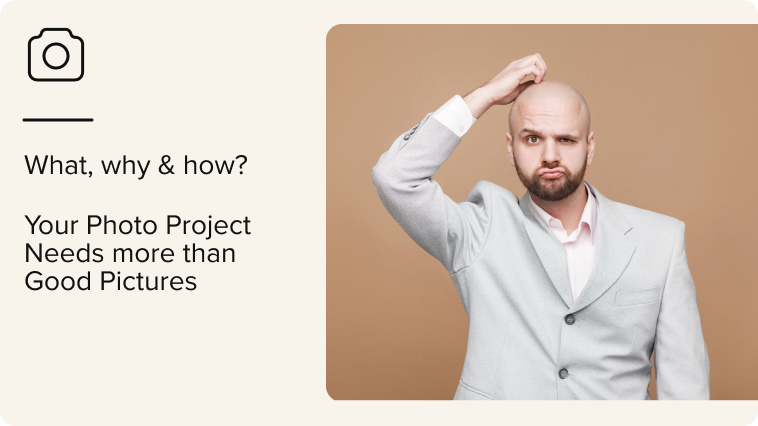
Many emerging photographers, eager to break into the market, often set their daily rates at what seems to be a reasonable figure, such as 400 Dollars. While this amount might appear to be a fair starting point, it’s a pricing strategy that can ultimately hinder your growth and sustainability in the industry.
For the purpose of this article we will use the example of 400 Dollars, but keep in mind that we mean any figure that might be below or above that which is considered too low for a day rate. Of course there are many factors, like the cost of living in your town or city, if it’s your part or full-time job and if you are a beginner or seasoned pro.
Underestimating Your True Costs
First and foremost, setting a daily rate of 400 Dollars significantly underestimates the true costs of running a photography business. Beyond the immediate costs of equipment, travel, and time spent shooting, photographers must also consider the hidden expenses that come with the profession. This includes post-processing time, equipment maintenance, insurance, marketing, and continuous education to stay ahead in a highly competitive field. When you break down your daily rate by the actual hours worked, including all these unseen tasks, 400 Dollars quickly diminishes to a figure that’s far less sustainable.
The Value Perception
Pricing affects perception. When you set a low daily rate, it inadvertently sets a tone for how clients perceive the value of your work and expertise. Photography, an art form that requires a keen eye, technical skill, and creative vision, should be priced in a way that reflects its value. A rate of 400 euros a day may lead potential clients to question the quality and professionalism of your services, pushing the more lucrative projects towards photographers who charge higher rates that suggest a higher level of prestige and expertise.
Limiting Your Growth
By setting a low daily rate, you’re not just limiting your current earnings but also your potential for growth. Investing in better equipment, software, and training requires capital. A rate of 400 euros a day restricts your ability to reinvest in your business, hindering your ability to improve and expand your services. Furthermore, this rate may not provide the financial stability needed to dedicate time to personal projects that can enhance your portfolio and attract higher-paying clients.
The Trap of Overworking
To compensate for the lower daily rate, photographers might find themselves taking on more projects than they can handle, leading to burnout. The quality of your work could suffer, damaging your reputation and making it even harder to command higher rates in the future. Photography is not just about capturing images; it’s about creating art and telling stories. This creative process cannot be rushed without compromising quality.
Setting a Precedent
Once you’ve set a low rate, it can be challenging to increase your prices, especially with existing clients. You risk setting a precedent that’s hard to break from, trapping you in a cycle of undervaluing your work. Gradually increasing your rates as you gain more experience and recognition is a natural progression in any creative career. However, starting too low makes this climb steeper and more challenging.
Moving Forward
So, what’s the alternative?
Begin by calculating your true daily operational costs, considering all factors of your business. Research the market to understand the going rates for photography services similar to yours. Don’t be afraid to position yourself higher if your skills, experience, and portfolio justify it. Educate your clients about the value you bring to the table, highlighting the quality, dedication, and unique vision you offer.
Remember, your pricing reflects not just the value of your work but also the respect you have for your own art. As photographers, it’s crucial to strike a balance between competitive pricing and sustainable business practices. Charging what you’re truly worth is not just about financial gain; it’s about respecting your art, your industry, and yourself.
Navigating the complex terrain of pricing in photography requires a thoughtful approach that respects both your craft and the market. Here’s how to move forward and set a price that reflects the true value of your work.
Understanding Your Costs
Begin with a comprehensive analysis of your daily operational costs. This includes the obvious expenses like equipment purchases and rentals, travel, and studio space, but also the less apparent ones like software subscriptions, website maintenance, marketing, insurance, and taxes. Factor in the cost of continuous learning and professional development, which are crucial for staying relevant in a rapidly evolving field.
Calculate the time you spend on non-shooting activities, such as editing, client consultations, and administrative tasks. These hours contribute significantly to your workload but are often overlooked when setting prices. By understanding your total operational costs, you can determine a baseline daily rate that covers these expenses while ensuring a profit.
Market Research
Conduct thorough research to understand the going rates for photography services within your niche and region. Prices can vary widely depending on the type of photography, the market demand, and the level of expertise. Use this information as a benchmark, but remember, your rates should ultimately reflect your unique value proposition.
Positioning Yourself in the Market
If your skills, experience, and portfolio are above average, don’t hesitate to position yourself higher in the market. Clients who recognize the value of high-quality photography are willing to pay a premium for a service that stands out. Highlight your unique selling points—be it your artistic style, technical expertise, or exceptional customer service. These factors justify higher rates and help differentiate you from competitors.
Educating Your Clients
Many clients may not understand the intricacies of professional photography, including the time and effort that goes into planning, shooting, editing, and delivering the final product. Take the time to educate your clients about the process, emphasizing the value and benefits of your services. Create detailed proposals that break down the costs and outline what the client is receiving for their investment. Use your portfolio and testimonials to showcase the quality of your work and the satisfaction of past clients.
Reflecting the Value of Your Art
Your pricing should mirror the respect you have for your art and the photography industry. It’s not just about covering costs or matching competitors; it’s about charging what your work is genuinely worth. This approach not only ensures financial sustainability but also fosters a sense of pride and respect for your craft.
Striking a Balance
Finding the right balance between competitive pricing and sustainable business practices is key. Your rates should be fair to both you and your clients, reflecting the value you provide while remaining accessible to your target market. Regularly review and adjust your pricing to reflect your growing experience, changing market conditions, and evolving business needs. And remember you are not shooting every day so your income needs to cover what you need on a weekly, monthly or yearly basis.
Setting the right price for your photography services is a critical step in building a successful and sustainable business. By understanding your costs, researching the market, positioning yourself correctly, educating your clients, and respecting your art, you can establish a pricing strategy that supports your career goals and honors the value of your work. Remember, charging what you’re truly worth is a testament to the respect you have for your art, your industry, and yourself.
That's it!
So you have made it to the bottom of this article. Are you set to take your photography business to the next level now? Maybe picdrop can add to that!



